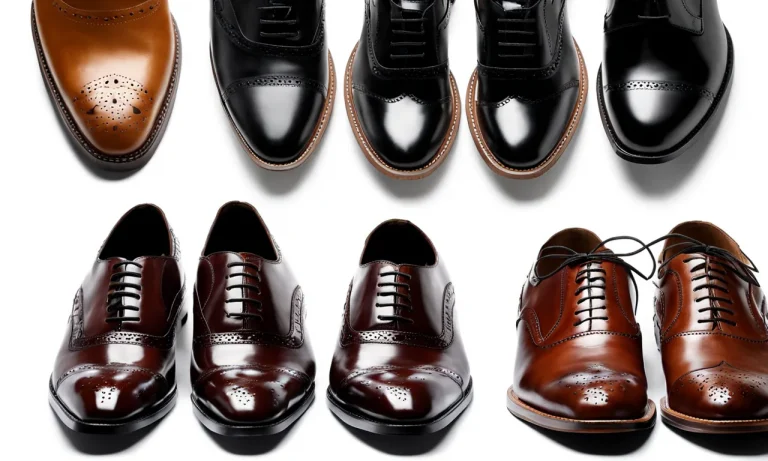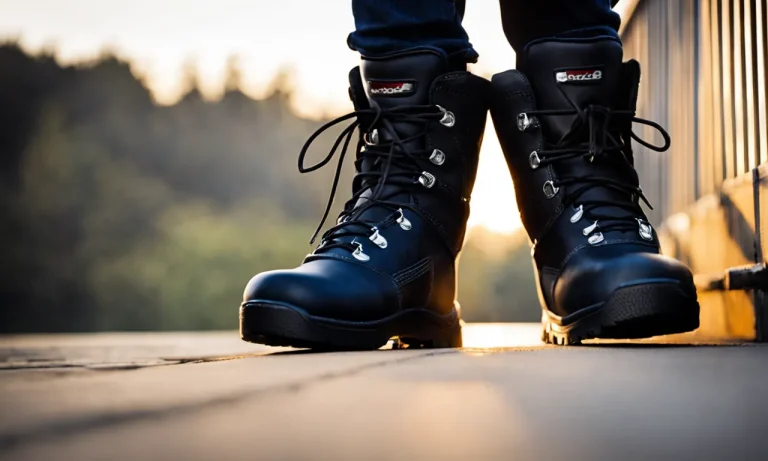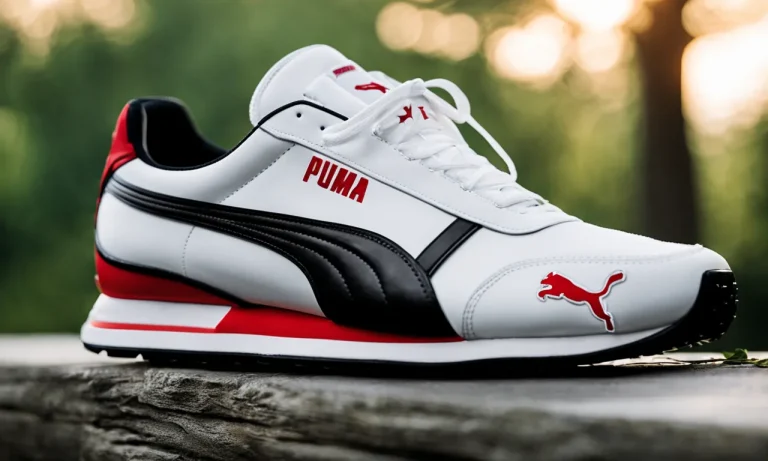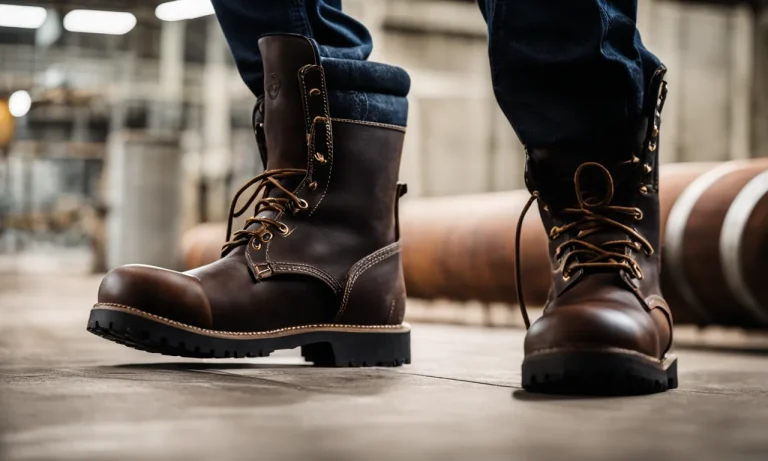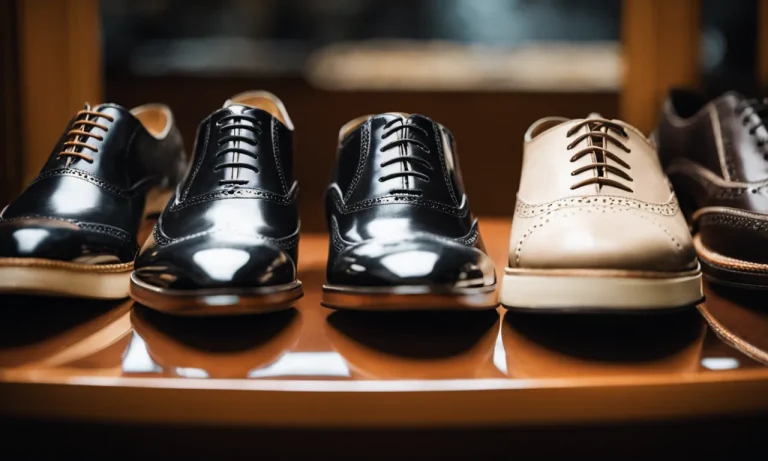Moon boots, also known as after ski boots, have been a popular cold weather footwear choice since the 1970s. With their thick padded design and rugged rubber sole, moon boots keep your feet warm and dry in the snow. But are they fully waterproof? Let’s take a closer look.
If you’re short on time, here’s a quick answer to your question: Moon boots are generally water resistant but not fully waterproof. Their materials and construction make them good at repelling water and slush, but they are not meant for full water submersion or activities like puddle jumping.
Moon Boots Are Water Resistant, Not Waterproof
When it comes to protecting your feet from the elements, moon boots are a popular choice. However, it’s important to understand that while moon boots are water resistant, they are not completely waterproof.
This means that while they can withstand some moisture, they may not be the best option for extremely wet conditions or prolonged exposure to water.
Thick padding absorbs moisture
Moon boots are designed with thick padding to provide insulation and keep your feet warm. While this padding can help to absorb some moisture, it is not completely waterproof. If you find yourself walking through puddles or in heavy rain, the padding may become saturated, leading to dampness inside the boot.
Vulnerable seams
Another factor to consider is that moon boots often have seams where different materials are stitched together. These seams can be vulnerable to water penetration, especially if they are not properly sealed or reinforced.
While some moon boots may have extra measures in place to prevent water from seeping in, it’s important to be cautious when wearing them in wet conditions.
Comparison to rain boots
When it comes to waterproof footwear, rain boots are generally a more reliable choice. Rain boots are specifically designed to keep your feet dry in wet conditions, with materials and construction methods that are highly resistant to water penetration.
If you know you’ll be in an environment with heavy rain or standing water, it may be a better idea to opt for rain boots instead of moon boots.
However, if you’re just looking for a stylish and comfortable option for light rain or occasional wet conditions, moon boots can still be a great choice. Just be mindful of the limitations and take appropriate precautions to keep your feet as dry as possible.
For more information on moon boots and waterproof footwear, you can visit websites such as Outdoor Gear Lab or REI.
Ideal Uses for Moon Boots
Playing in snow
Moon boots are perfect for playing in the snow. Their thick insulation and waterproof materials make them ideal for keeping your feet warm and dry in snowy conditions. Whether you’re building a snowman, having a snowball fight, or going sledding, moon boots provide excellent protection against the cold and wet.
With their sturdy grip soles, you can confidently navigate through the snow without the fear of slipping or sliding. So, go ahead and enjoy the winter wonderland in your moon boots!
Walking in slush
Walking in slush can be quite messy, but with moon boots, you don’t have to worry about getting your feet wet. Moon boots are designed to be waterproof, which means they can handle walking through slushy and wet terrain without any issues.
The water-resistant materials and sealed seams ensure that no moisture seeps into the boots, keeping your feet nice and dry. So, whether you’re running errands on a rainy day or exploring a slushy city street, moon boots are a great choice for keeping your feet protected.
Après ski wear
After a thrilling day on the slopes, there’s nothing better than slipping into a cozy pair of moon boots for some après ski fun. Moon boots are not only warm and comfortable but also stylish, making them the perfect footwear for post-ski activities.
Whether you’re enjoying a hot cocoa by the fire or dancing at a ski resort party, moon boots will keep your feet warm and add a touch of flair to your après ski outfit. So, don’t forget to pack your moon boots for your next winter getaway!
Consider Waterproofing Treatments
When it comes to keeping your Moon Boots dry, one option to consider is applying a waterproofing treatment. These treatments can help repel water and prevent it from seeping into the material of your boots, keeping your feet nice and dry even in wet conditions.
There are a few different types of waterproofing treatments available, each with its own advantages and limitations.
Spray-on waterproofing
A popular choice for waterproofing Moon Boots is spray-on waterproofing. This type of treatment is easy to apply and provides a thin protective layer on the surface of the boots. Simply spray the waterproofing solution evenly onto the boots, making sure to cover all areas.
Once applied, the solution forms a barrier that repels water and helps to keep your boots dry.
One advantage of spray-on waterproofing is that it is typically quick-drying, allowing you to wear your boots without waiting for a long time. Additionally, some spray-on waterproofing products also offer added benefits such as UV protection and stain resistance, helping to keep your boots looking great for longer.
Wax-based treatments
Another option for waterproofing Moon Boots is using wax-based treatments. These treatments involve applying a layer of wax onto the boots, which creates a waterproof barrier. The wax is typically melted and then spread evenly onto the surface of the boots, ensuring thorough coverage.
Wax-based treatments offer excellent water resistance and can provide long-lasting protection. The wax forms a durable coating on the boots, helping to repel water even in heavy rain or snow. However, it’s important to note that wax-based treatments may alter the appearance of the boots, giving them a slightly darker or shinier finish.
Limitations of aftermarket waterproofing
While waterproofing treatments can be effective in keeping your Moon Boots dry, it’s important to understand their limitations. Aftermarket waterproofing treatments are not a guarantee that your boots will be completely waterproof in all conditions.
Factors such as the quality of the treatment, the material of your boots, and the level of exposure to water can all affect the effectiveness of the waterproofing.
It’s also worth noting that aftermarket waterproofing treatments may need to be reapplied periodically, especially if you frequently wear your boots in wet conditions. Over time, the protective layer applied by the treatment may wear off, reducing its effectiveness.
Therefore, it’s a good idea to regularly check the water repellency of your boots and reapply the waterproofing treatment as needed.
Before applying any waterproofing treatment, it’s always a good idea to read and follow the manufacturer’s instructions carefully. Different treatments may have specific application methods and drying times, so it’s important to ensure that you are using the product correctly for the best results.
Remember, while waterproofing treatments can help protect your Moon Boots from water damage, they cannot make them completely impervious to water. It’s always a good idea to use common sense and avoid submerging your boots in deep water or wearing them in extreme weather conditions.
Alternatives for Full Waterproofing
Rain boots
If you’re looking for an alternative to moon boots that are fully waterproof, rain boots are a great option. Rain boots are specially designed to keep your feet dry in wet conditions. They are made from waterproof materials such as rubber or PVC, which prevent water from seeping inside.
Rain boots also usually have a tall shaft that covers your calves, providing additional protection against rain and puddles. Whether you’re walking through a downpour or splashing in puddles, rain boots will keep your feet dry and comfortable.
Snow boots
If you’re planning to venture out in snowy conditions, snow boots are your best bet for keeping your feet warm and dry. Snow boots are not only designed to provide insulation and warmth, but they are also made with waterproof materials.
These boots often have a waterproof membrane or coating that prevents snow, slush, and water from entering. Additionally, snow boots typically have a thick sole with deep treads to provide excellent traction on slippery surfaces.
So, if you’re heading to the mountains for some winter fun, don’t forget to pack your trusty snow boots.
Muck boots
Another alternative to moon boots when it comes to full waterproofing is muck boots. Muck boots, also known as wellington boots or rubber boots, are designed for heavy-duty use in muddy and wet environments.
These boots are made from durable rubber that is not only waterproof but also resistant to chemicals, oils, and other substances. Muck boots often have a reinforced toe and heel for added protection and durability.
Whether you’re working on a farm, gardening, or hiking through marshy areas, muck boots will keep your feet dry and protected from the elements.
There are various options available in the market when it comes to alternatives for full waterproofing. Rain boots, snow boots, and muck boots are just a few examples of footwear specifically designed to keep your feet dry in different weather conditions.
It’s important to choose the right type of boots based on your specific needs and the environment you’ll be in. Remember, keeping your feet dry is not only essential for comfort but also for preventing potential health issues such as blisters and fungal infections.
So, gear up with the right waterproof boots and enjoy your outdoor adventures without worrying about wet feet!
Conclusion
While moon boots have great insulation for warmth and their rugged tread provides traction, their seam construction and absorbent padding make them fall short of being fully waterproof. They can handle light moisture but aren’t built for submersion.
If you need footwear that can withstand puddles or slush soaking through entirely, you may want to consider a dedicated waterproof boot instead.

